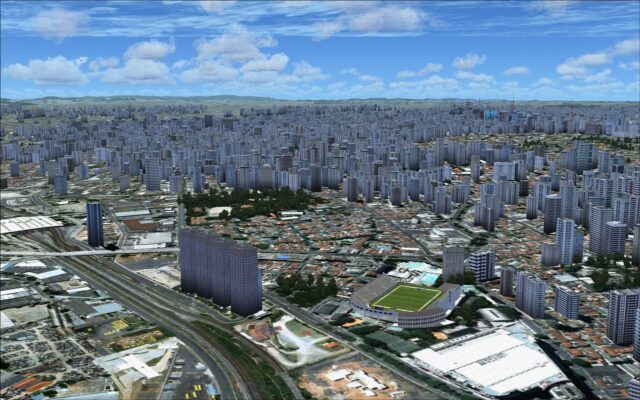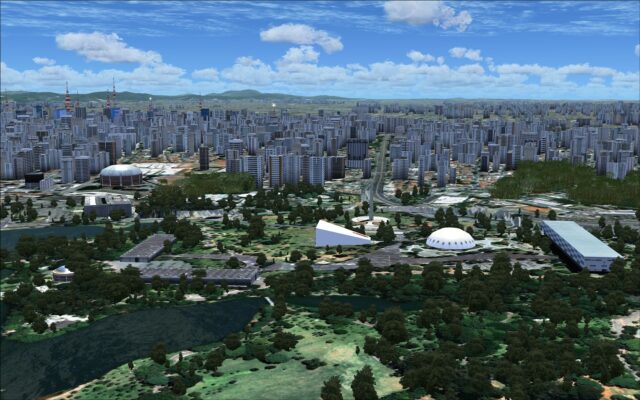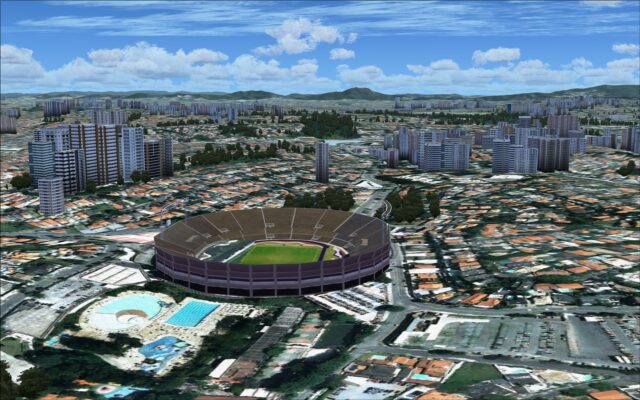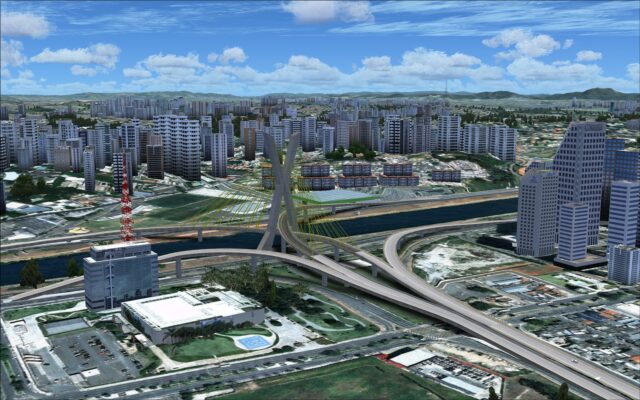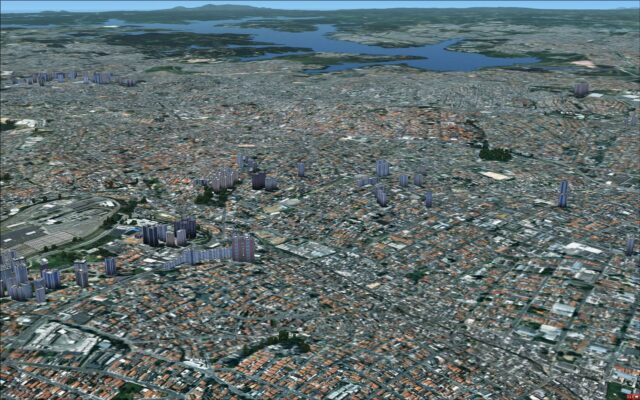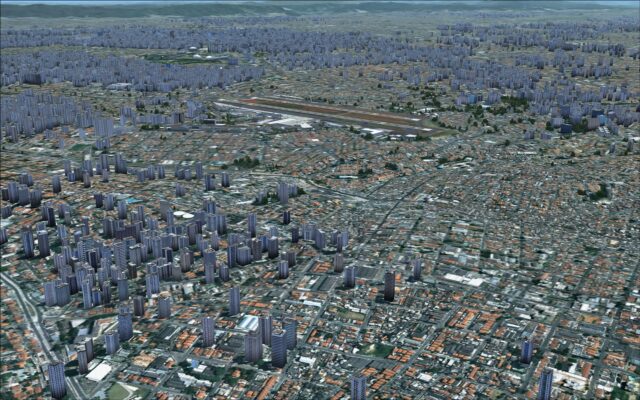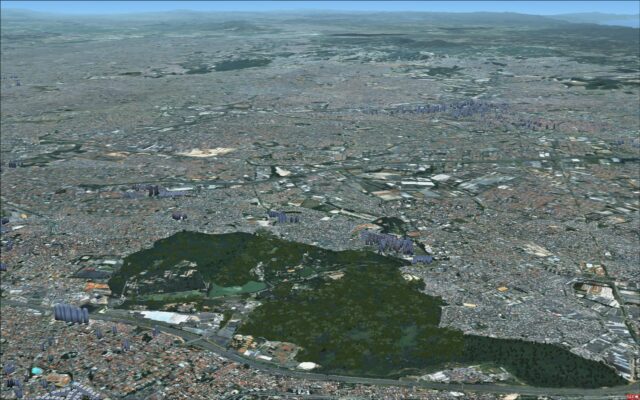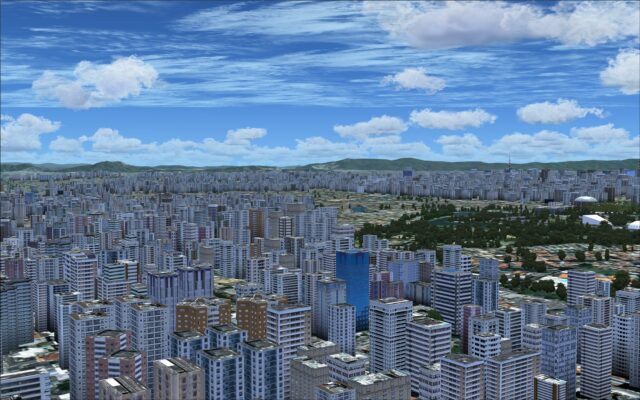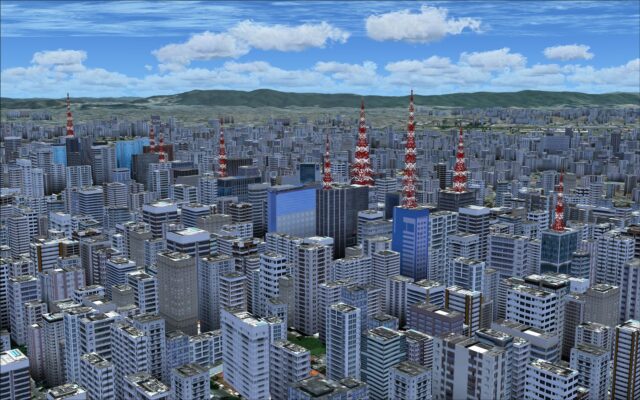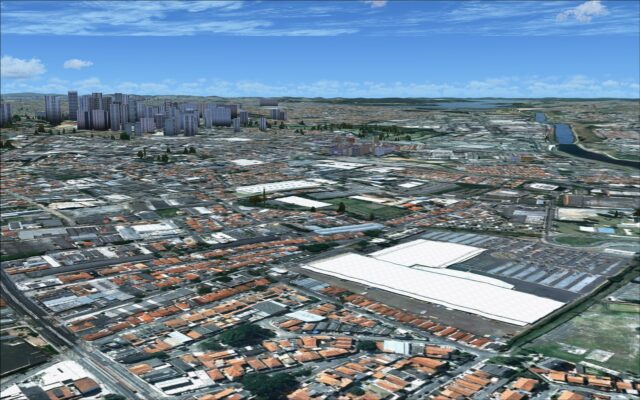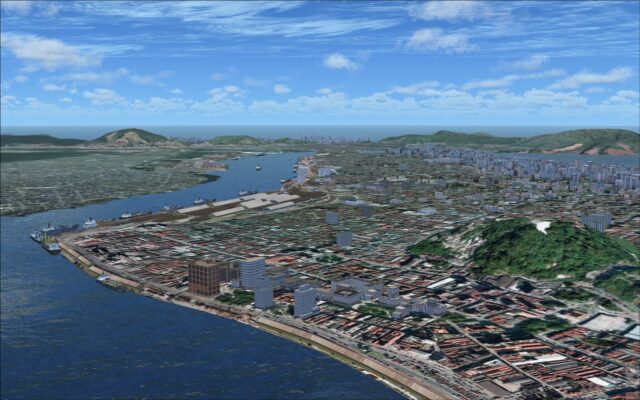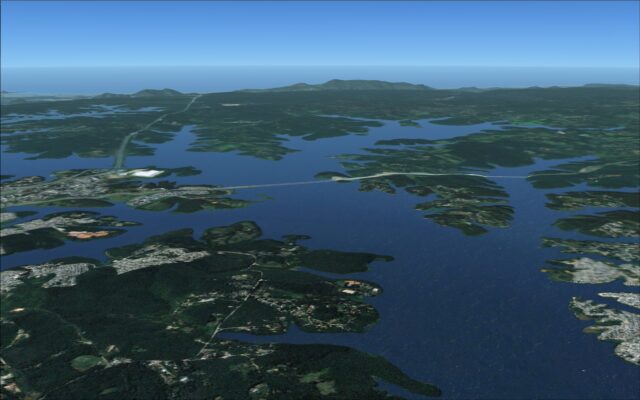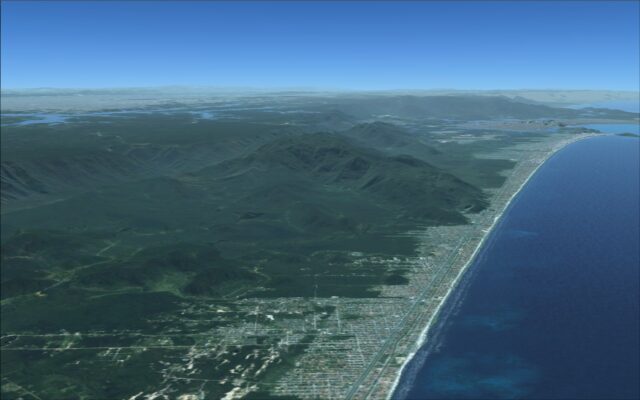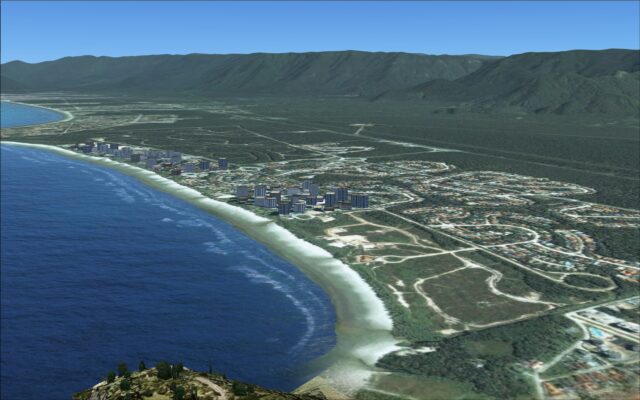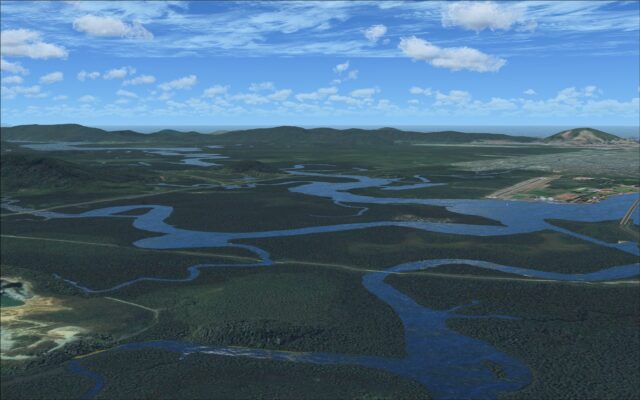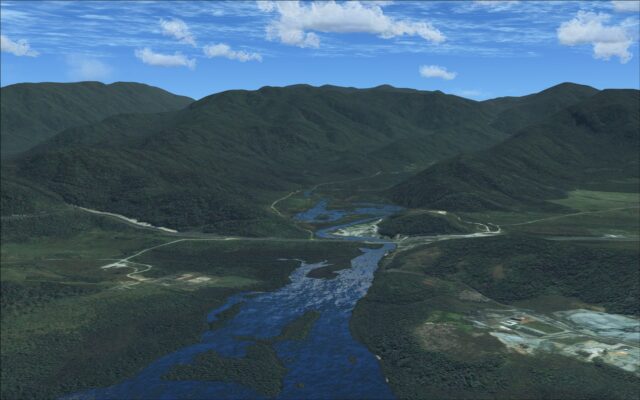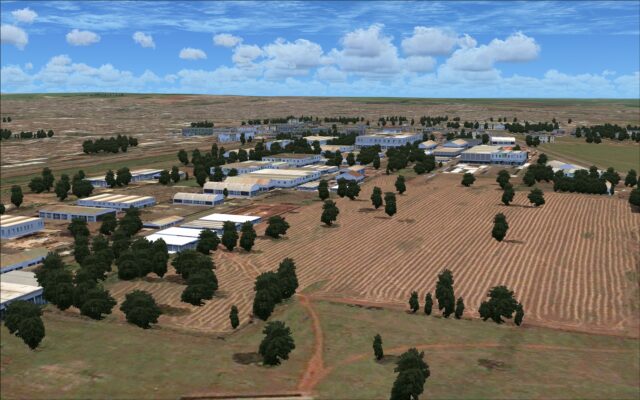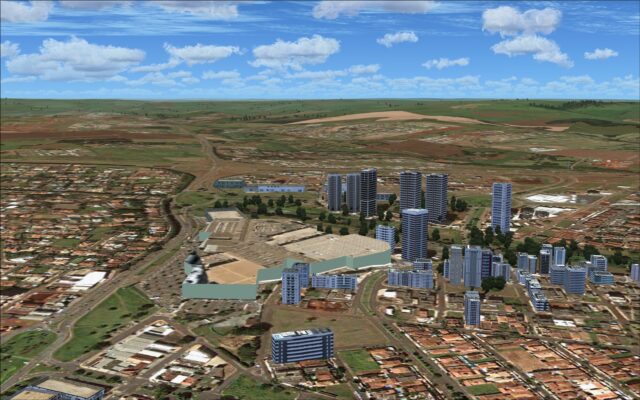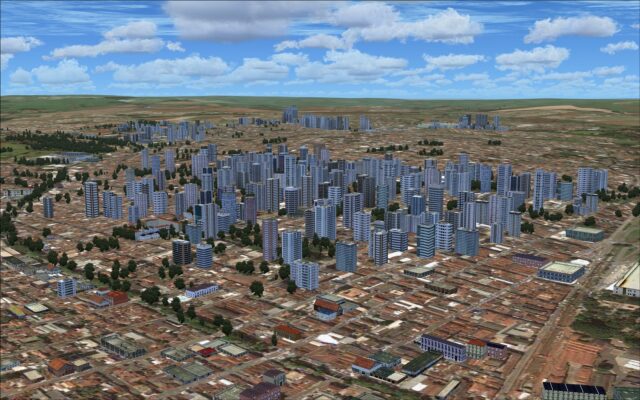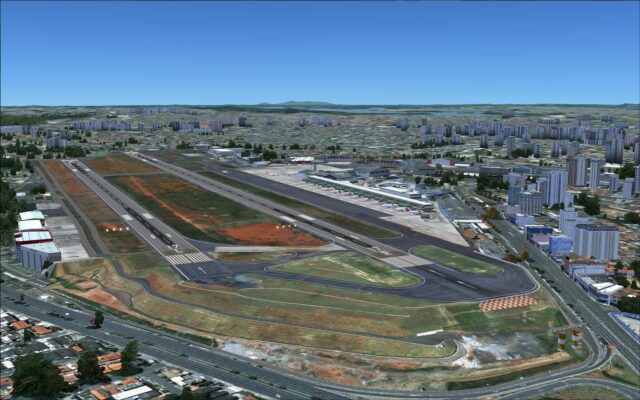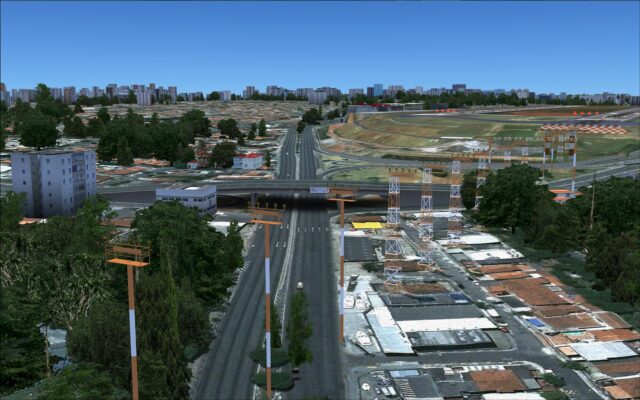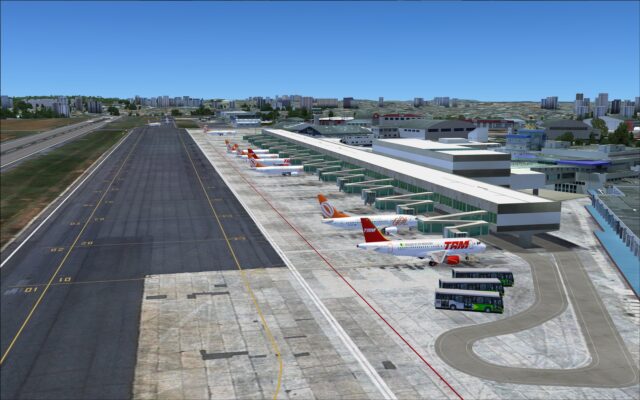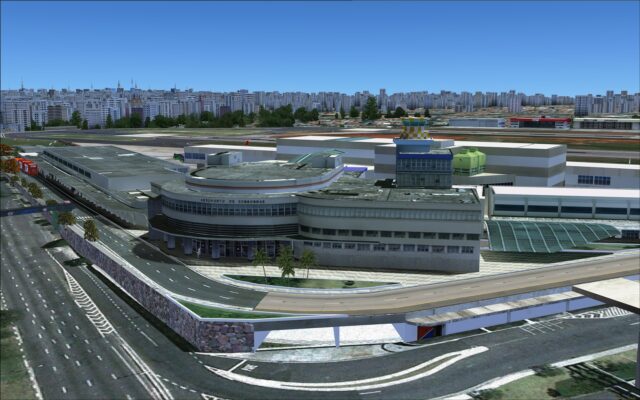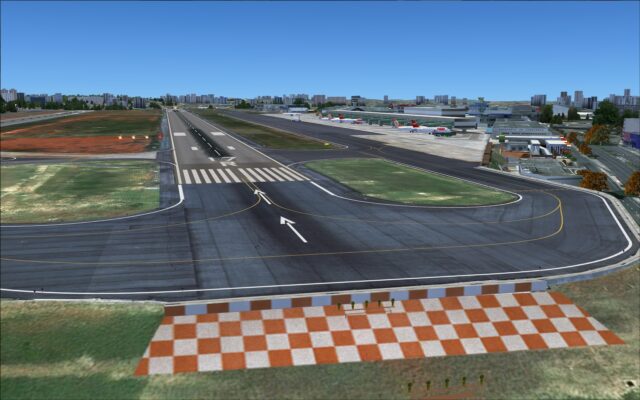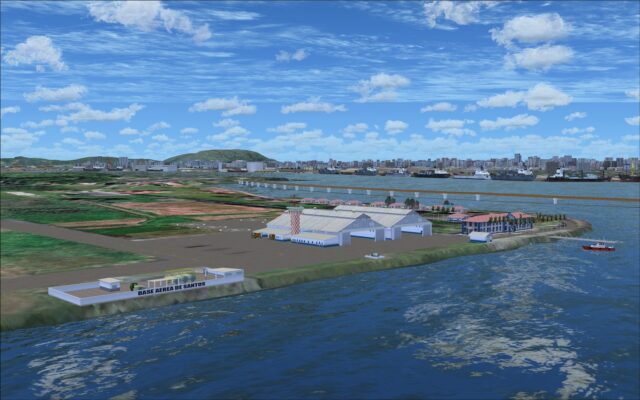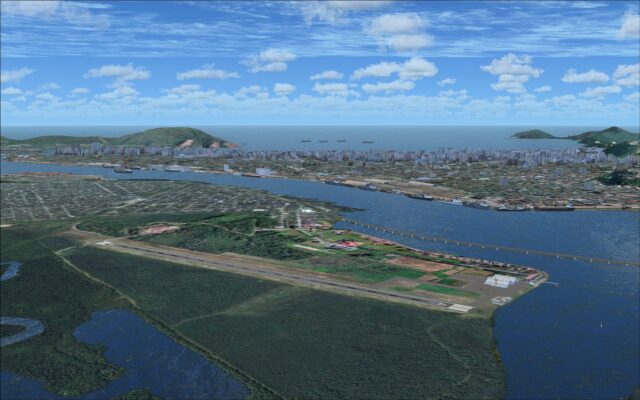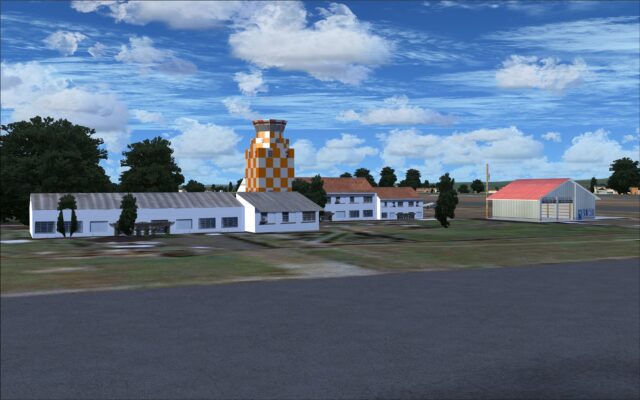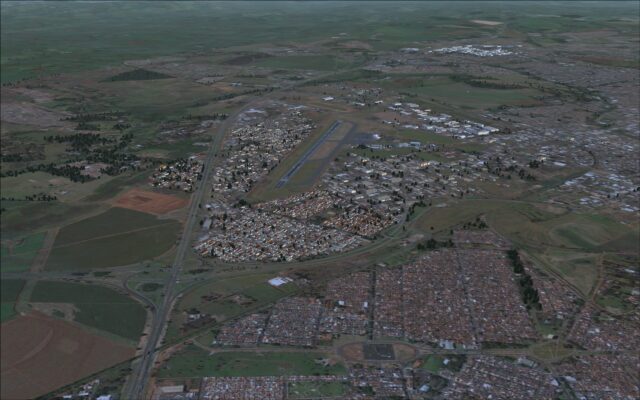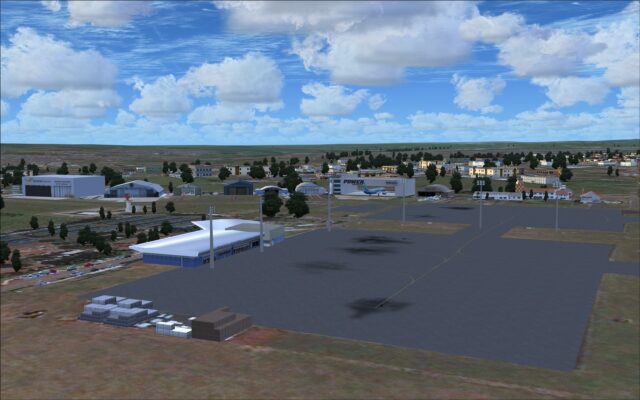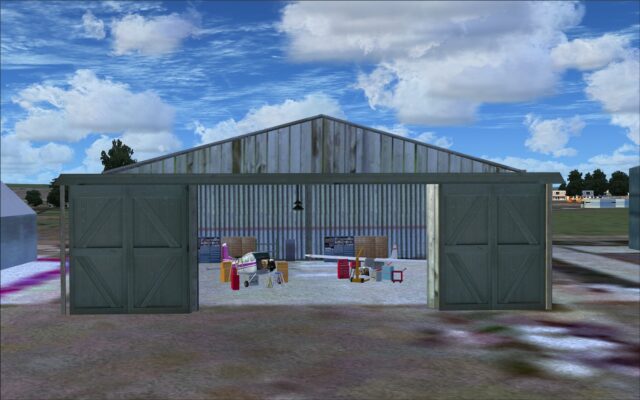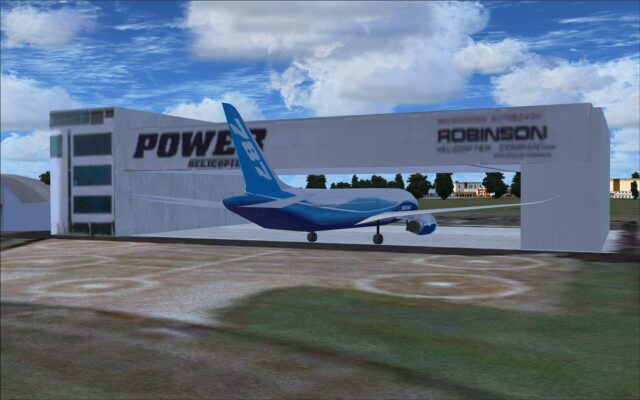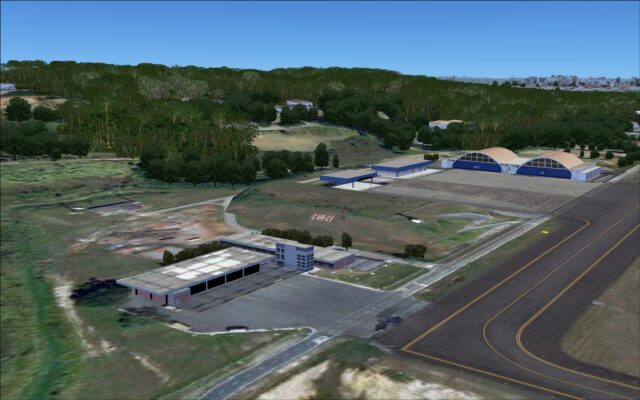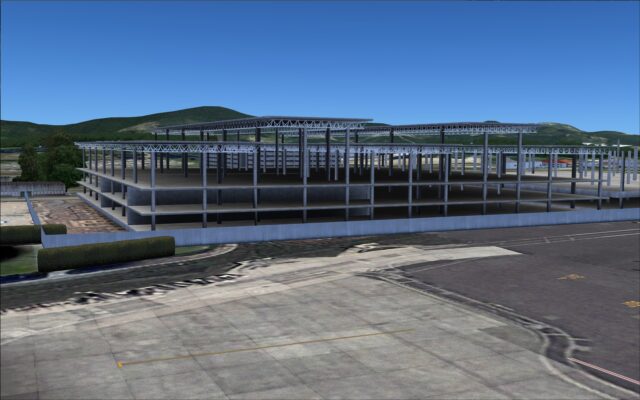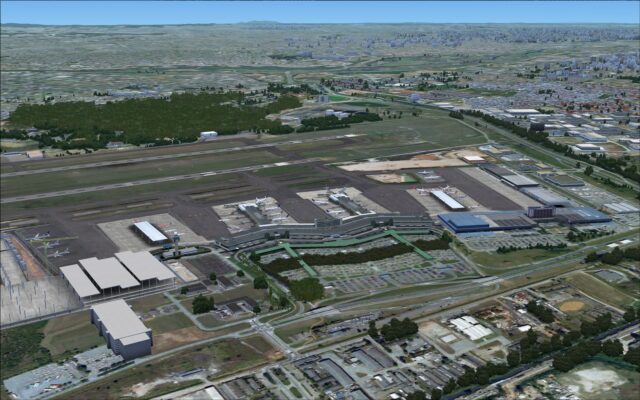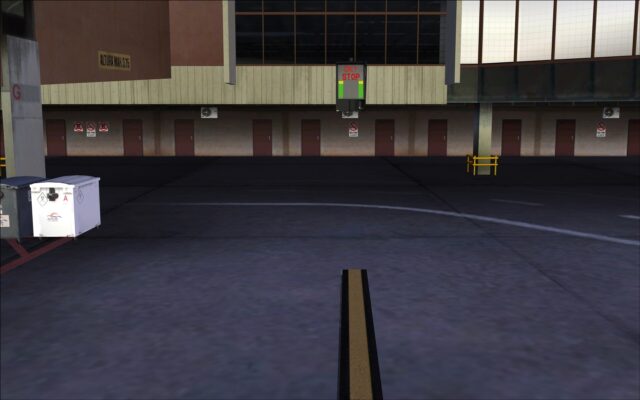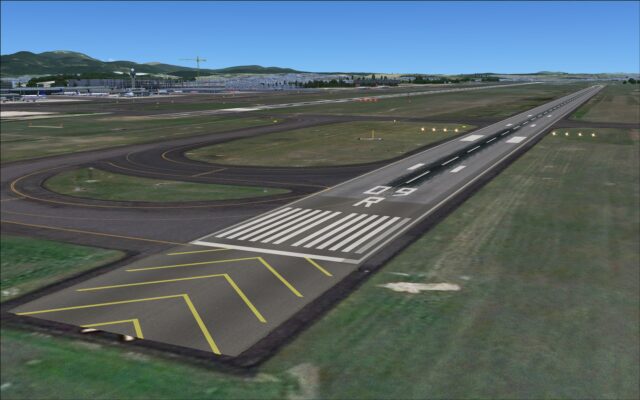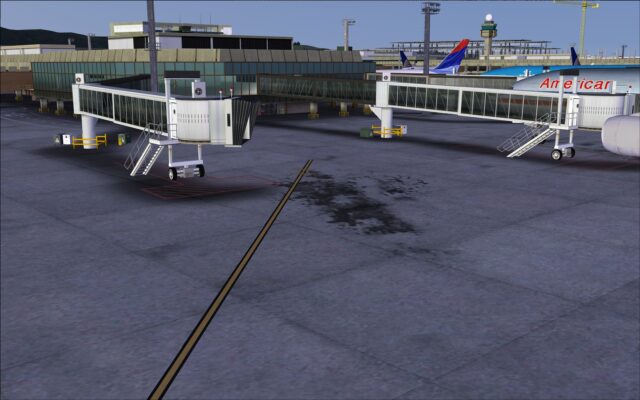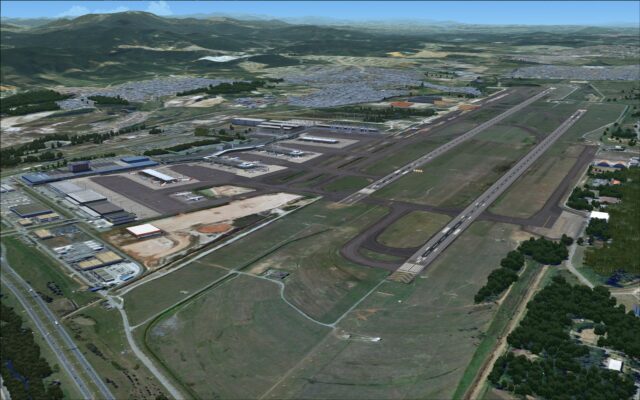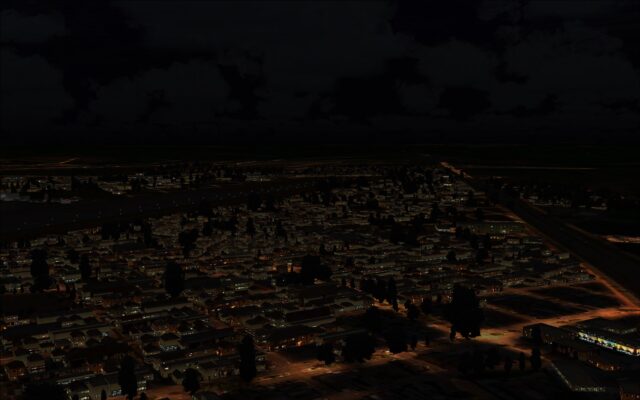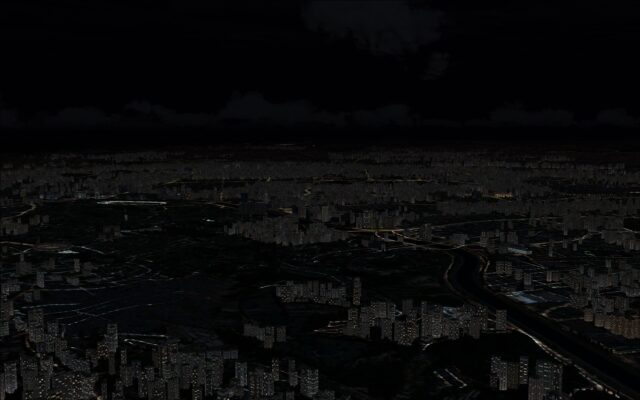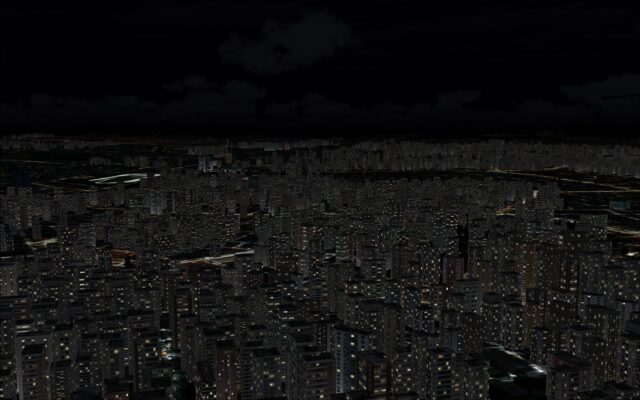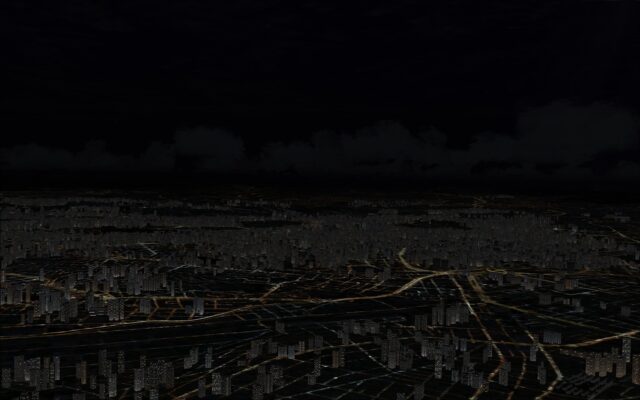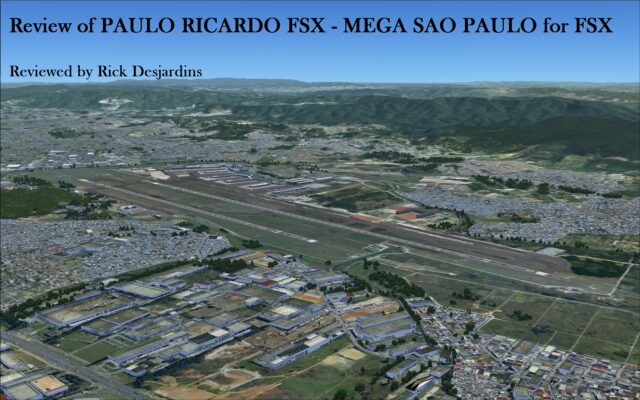
Brazil is a very beautiful part of the world and with this recently released scenery addon they’ve given the cities of Sao Paulo and Ribeirão Preto and their surrounding areas a major makeover.
Sao Paulo, which is the main focus of the addon, is the largest city in Brazil with a population of approx. 20 million people. It is also the capital of the state of São Paulo and is the sixth largest city in the world ranked by population. The city has significant cultural, economic and political influence both within the country of Brazil and internationally.
Ribeirão Preto, the second focus of the addon, is a city in the Northeastern region also in the state of São Paulo in Brazil. With a population of about 620,000 it is the 8th largest municipality in the state.
For those of you who already own the group’s previously released product “MEGA ROUTE RIO SAO PAULO AND NATAL CITY PACK 5 for FSX” the two integrate seamlessly. For the purposes of this review I have disabled my copy of the MEGA ROUTE RIO so the visuals you are seeing are only of the scenery being reviewed.
Installation
The file size for this scenery addon is a very hefty 11.6Gbs split into 9 files.
Installation was straightforward but you will need to be connected to the internet to get an authorization number that allows you to complete the installation process. The installation procedure is explained on the SimMarket site with a link on the product’s page.
Running the executable, you will be prompted for the email address used for the purchase plus the serial key provided at the time of the purchase. This will in turn generate an authorization number which you will input in the next step of the installation process. You might want to write that number down if you need to reinstall the scenery. Next you confirm the folder path for where the scenery will be installed and the program shortcuts in the Start Menu Folder. After that you simply let the installer run, it will add the scenery to the FSX scenery library. There are six entries; Ribeirao_Preto_Landclass, Ribeirao_Preto, MegaSPaulo, PR_Guarulhos, SBSP Congonhas RGons In Memorium and SBST Santos.
Documentation
They include two PDF product manuals; one in English and one in Spanish. The English manual is short with much of it being a mix of Spanish and poorly translated English. Unfortunately this makes portions of it almost unusable unless you already know what you’re doing. They provide some general information about the product, basic setting recommendations, a brief mention about 3D night lighting if you have “Global ORBX FTX” installed along with Wikipedia links for several of the airports and finally some information about the bonus city of Ribeirao Preto.
Also included is a “Charts” folder where they have provided various charts for SBSP, SBMT and SBGR.
Configuration
There are no configuration options per say but what they do provide are alternate night light textures if you have “Global ORBX FTX” installed. I do not, so I was not able to check these out.
Scenery
They used a combination of accurate mesh, landclass, photo imagery ground textures and extra autogen/objects throughout. The topography is varied and includes mountainous terrain, agricultural lands, a complex coastline, and of course the cities of Sao Paulo and Ribeirão Preto.
Sao Paulo Area
Beginning with the Sao Paulo area you can see just how large of an area it is. The city is located on a plateau west of the Serra do Mar or coastal mountain range which is part of the vast Brazilian Highlands.
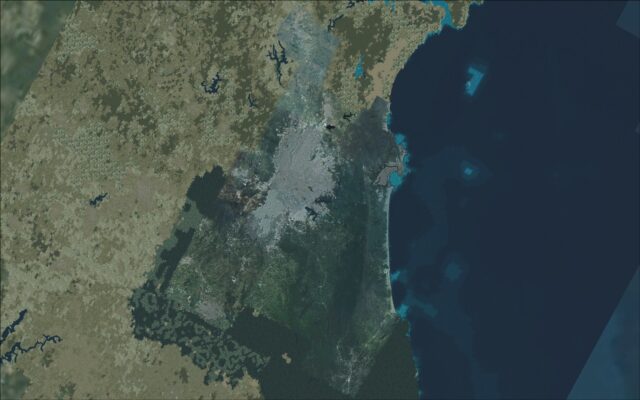 The city of Sao Paulo is a huge city and like any large metropolitan area a monumental task to recreate and to do it justice. To begin, the high resolution photo imagery base allows us to see lots of details; roads, walkways, all types and sizes of structures, parks, sports fields, rivers, etc. In addition, these photo images have been populated with thousands of buildings, mostly generic looking but they have included some custom structures that depict local landmarks such as the distinct Octavio Frias de Oliveira bridge and the Museum of Modern Art.
The city of Sao Paulo is a huge city and like any large metropolitan area a monumental task to recreate and to do it justice. To begin, the high resolution photo imagery base allows us to see lots of details; roads, walkways, all types and sizes of structures, parks, sports fields, rivers, etc. In addition, these photo images have been populated with thousands of buildings, mostly generic looking but they have included some custom structures that depict local landmarks such as the distinct Octavio Frias de Oliveira bridge and the Museum of Modern Art.
To fill the entire city would probably drag any PC to its knees. In this case they’ve populated a large portion of the city and its surroundings but not all of it so there are areas of the city that are relegated to only the photo images with no structures. Sure it saves on performance but has a negative effect on the visuals. Overhead at cruising altitude you can’t differentiate between areas that do or don’t have the 3d structures you only see the details that are clearly visible on the photo image base textures. It’s really only when you’re arriving or departing from one of the airports near Sao Paulo or flying at lower altitudes taking in the sights that it becomes all too apparent.
The accurate mesh is another aspect of the addon that makes a difference in all parts of the scenery but we see its strengths more visibly in the mountainous and coastal areas. This area is very picturesque with its mountains, waterways and long shorelines and we get to experience that in large part to the mesh and photo imagery base. This whole area really showcases the natural beauty that the region has to offer. The wilderness areas like some parts of the cities were lacking in 3d objects, in this case it was 3d vegetation.
The coastal area is also home to several cities with Santos being the most prominent. It has been modelled to a certain degree using the same techniques seen throughout. Some areas were populated with buildings and other special objects such as cranes and ships while other areas were simply flat photo image ground textures. In spite of this I thought that it was an interesting area with the combination of the natural beauty of the local geography, the port, airport and of course the city.
The other area covered by this scenery is centered around the city of Ribeirão Preto which is to the north of Sao Paulo. The screenshot shows how they use the photo scenery for the city and surround that with updated landclass so the transition between their scenery and FSX aren’t so harsh.
 The techniques used to recreate this city were the same as those used for Sao Paulo; structures placed over top of a photo scenery base. Although the photo scenery was detailed when it came to the placement of objects on the base and the density of objects populating the city, I felt that it fell far short of what I would have liked to see. It is a city of over 600 thousand but you would never know it by the scenery. There are some buildings in the area near the airport and a few more clusters of buildings scattered around the city. The buildings for the most part were generic and their location on the base textures didn’t appear to be accurate at all.
The techniques used to recreate this city were the same as those used for Sao Paulo; structures placed over top of a photo scenery base. Although the photo scenery was detailed when it came to the placement of objects on the base and the density of objects populating the city, I felt that it fell far short of what I would have liked to see. It is a city of over 600 thousand but you would never know it by the scenery. There are some buildings in the area near the airport and a few more clusters of buildings scattered around the city. The buildings for the most part were generic and their location on the base textures didn’t appear to be accurate at all.
There are five airports within the boundaries of the scenery which have been given special attention; Sao Paulo’s Congonhas Airport (SBSP), Campus Martius Airport (SBMT), Guarulhos Cumbica Airport (SBGR), Dr Leite Lopes Airport (SBRP) and Santos Airport (SBST). The airports received makeovers that included custom structures, extra objects, enhanced ground and hard surface textures plus accurate runways/taxiway layouts. The variety in airport size and capability range from large international airports down to a single asphalt strip so, no matter what you like to fly, you are going to find at least one of the five will meet your needs as a pilot. As you will see from the screenshots they vary widely in what they have to offer and also in the quality. For those of you who like to fly helicopters there are also dedicated helipads at several of the airports and throughout the city.
After flying in and out of each airport I came away a bit disappointed, the quality I was hoping for wasn’t there at most airports. Sure there were parts that I thought were good but unfortunately overall most of them fell short. The inconsistency in the quality between airports was also an issue. At some of them the hard surface textures looked much like default textures while at others they appeared to use high quality custom textures, many of the buildings were very simplistic in their recreation while others were detailed. It was the same for many of the objects found at the airports as well. There were some that were quite good while others were very basic looking. To show what I mean I’ve included a number of screenshots from each of the airports that highlight both the good points as well as some of the poorer aspects.
Sao Paulo’s Congonhas Airport, SBSP
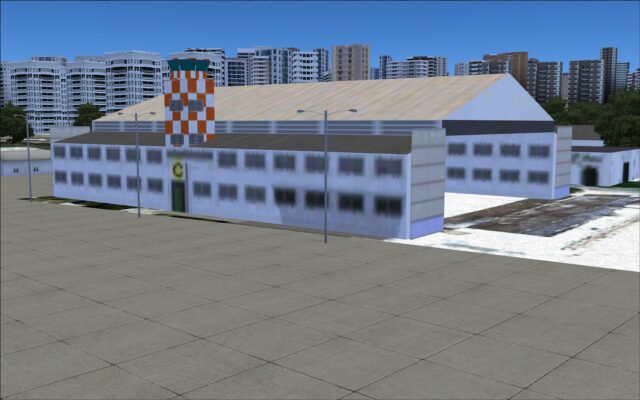
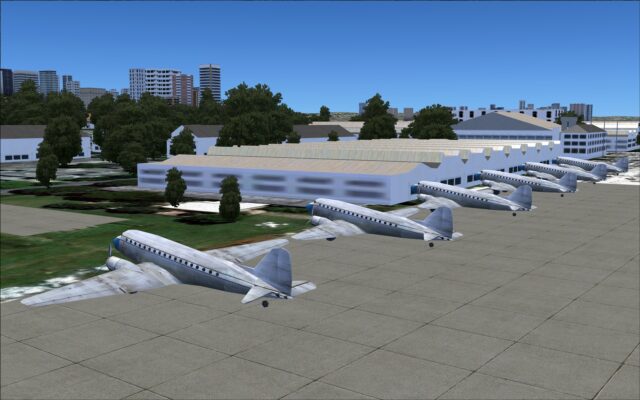
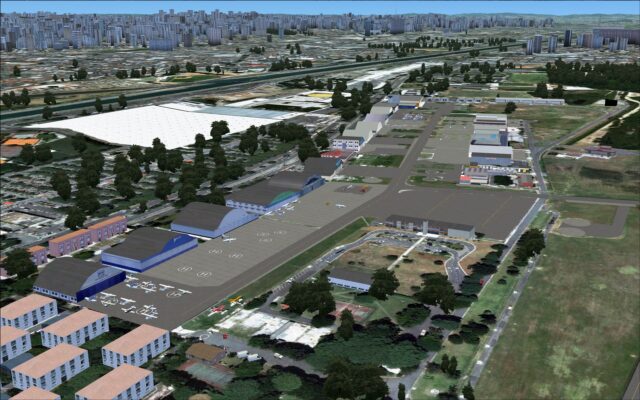 Guarulhos Cumbica Airport, SBGR
Guarulhos Cumbica Airport, SBGR
Of the five airports Guarulhos Cumbica Airport, SBGR was the best of the bunch as far as visual quality. It is the busiest airport in Brazil and as such deserved to be given extra special treatment I think. The airport has two parallel runways, a large passenger terminal, a cargo area and also on the opposite side of the airfield from the main terminal there are several military hangars. There is also a major construction project going on, the building of terminal 3. They used good colouring techniques, high resolution imagery in selected areas and some added details to try and make the buildings look realistic. Selected detail highlights include a couple of different and distinct style jet ways, apron overhead lighting poles and security barriers around the terminal’s building supports. Another nice feature at SBGR was the modelling of the visual docking aids. Terminal 3, which is under construction, is depicted in a partially finished state with its skeletal frame and large construction crane looking overhead. The hard surface textures looked quite realistic and also blended in well with the surrounding textures. The other ground textures were the same high resolution photo imagery textures used throughout the scenery. As far as extra objects go they’ve added a few but kept them to a minimum.
Night time gave mixed results; the airports for the most part were good. Each had ground taxiway/runway/approach lighting where appropriate, SBSP and SBGR both had nice halo effects from the apron overhead lighting, building lighting was quite good, several of the airports also had open hangars and their interiors were lit up.
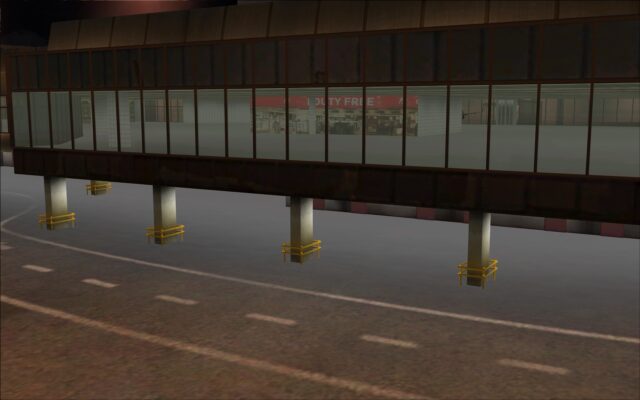
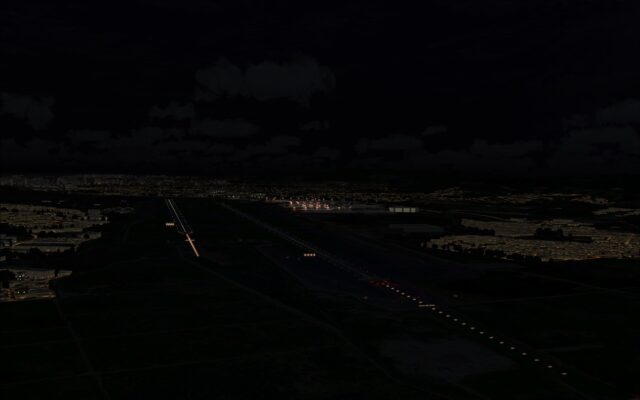
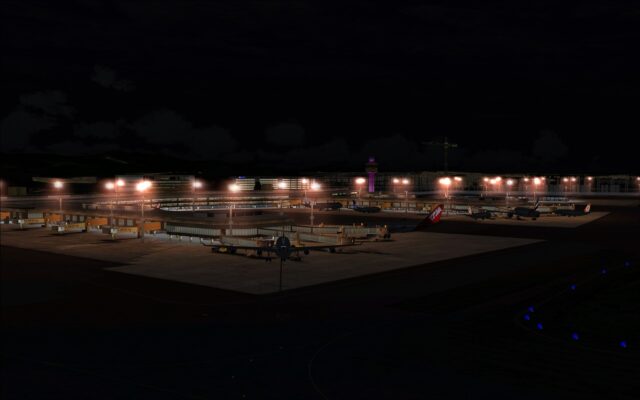
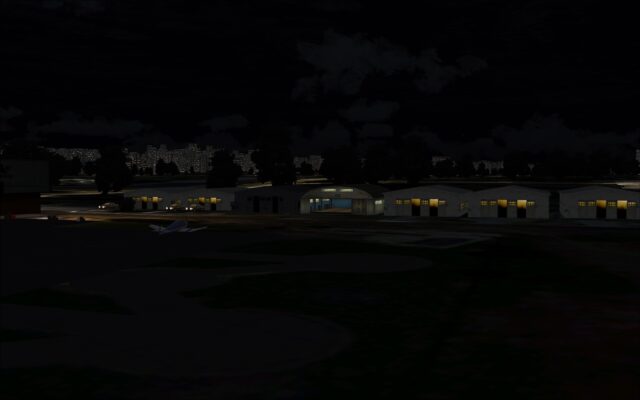
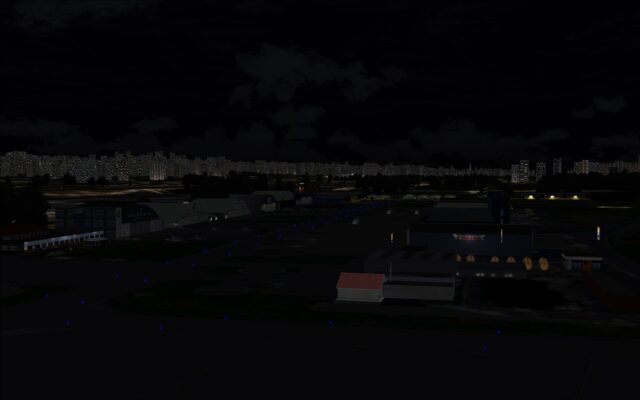
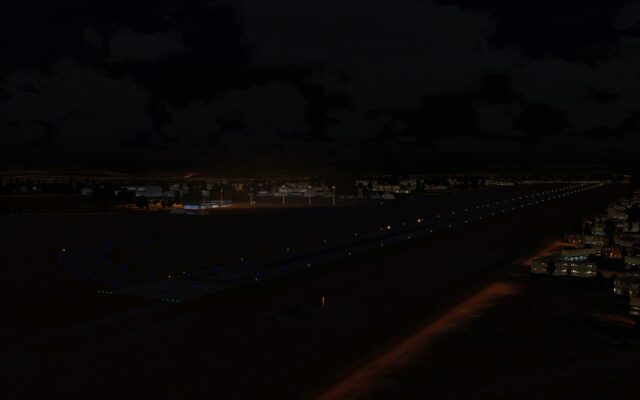
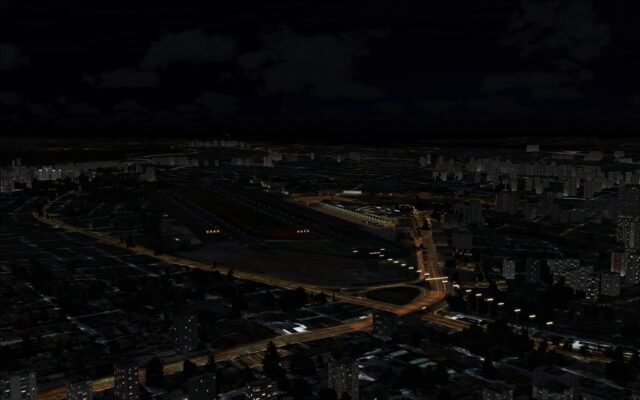
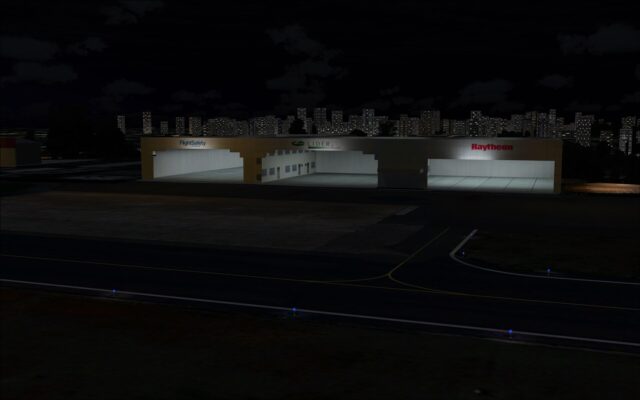
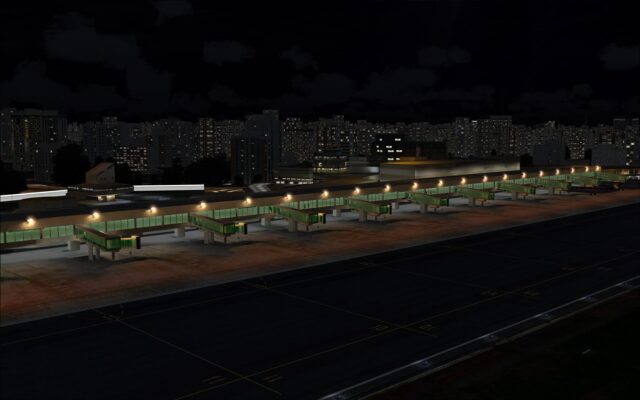 Moving away from the airports to the cities. In those areas that were densely populated with 3d structures, such as downtown Sao Paulo, the results were quite good and believable at any altitude. The combination of all the buildings lit up and then the network of roadways combined to make these areas seem to come to life and give one a feeling that they were busy and vibrant. The problems arose when you had the large gaps where there were no 3d structures and only flat ground textures visible with their spider webs of road networks all lit up. At high altitudes all looked good it was really only when you were at lower altitudes that the results were less than ideal.
Moving away from the airports to the cities. In those areas that were densely populated with 3d structures, such as downtown Sao Paulo, the results were quite good and believable at any altitude. The combination of all the buildings lit up and then the network of roadways combined to make these areas seem to come to life and give one a feeling that they were busy and vibrant. The problems arose when you had the large gaps where there were no 3d structures and only flat ground textures visible with their spider webs of road networks all lit up. At high altitudes all looked good it was really only when you were at lower altitudes that the results were less than ideal.
I ran the scenery with my sliders maxed and flew several different aircraft types; the PMDG 737 NGX, A320 Xtended, QW 757, Majestic Q400 and the Carenado CT210. I found the experience to be fluid throughout with one exception. When I flew approaches into Sao Paulo’s Congonhas Airport with the PMDG 737 NGX I experienced the dreaded OOM error. To eliminate this problem I dialed down my scenery complexity and autogen density from extremely dense to dense. Overall I have to say that the results were actually quite good and that I was pleased with the performance.
Final Thoughts
As much as I liked how the product took this part of the world to the next level, bringing some great picturesque scenery to FSX, I still came away with reservations. They took on a huge task in attempting to recreate Sao Paulo, Ribeirão Preto plus five local airports and I give them kudos for trying. Overall however I felt that the quality was not consistent and fell short in a number of different areas. I still believe that it is good value for the money but it isn’t their best work.
My Ratings
Installer: Good. Straightforward and simple to use.
Documentation: Poor. Difficult to understand. Some charts included.
Modelling: Good.
Extras:
Download Size: FSX 11.6GB split in 9 files
Price: EUR 28.90 without VAT
Developer Homepage: http://www.pauloricardofs.blogspot.com.br
Link http://secure.simmarket.com/paulo-ricardo-fsx-mega-sao-paulo-fsx.phtml
Test System:
Intel i7 960 OC @ 4.2 Ghz, 6 Gb RAM, Gigabyte GTX780 w3Gb video, Win 7 Ultimate 64, FSX w/acceleration, DX9, UT2, REX Overdrive, GEXn, UTX, AES, GSX, FSUIPC.
Richard Desjardins


